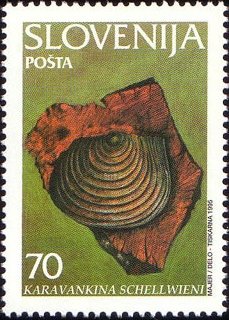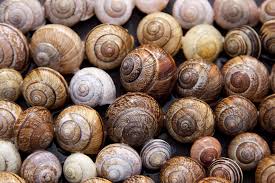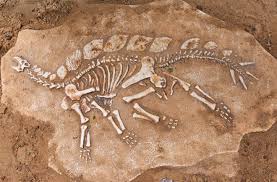Stamp: Fossils - Karavankina schellwieni (Slovenia 1995)
Fossils - Karavankina schellwieni (Slovenia 1995)
29 March (Slovenia ) within release Anniversaries goes into circulation Stamp Fossils - Karavankina schellwieni face value 70 Slovenian tolar
| Stamp Fossils - Karavankina schellwieni in catalogues | |
|---|---|
| Michel: | Mi:SI 108 |
| Yvert et Tellier: | Yt:SI 102 |
Stamp is vertical format.
Also in the issue Anniversaries:
- Stamp - Fossils - Karavankina schellwieni face value 70;
- Stamp - 50 anniversary of the end of World War II face value 13;
- Stamp - Europe an Natur Conservation Year - Triglav National Park face value 70;
- First Day Cover - 50 Anniversary of the end of World War II face value 13;
Stamp Fossils - Karavankina schellwieni it reflects the thematic directions:
A seashell or sea shell, also known simply as a shell, is a hard, protective outer layer created by an animal that lives in the sea. The shell is part of the body of the animal. Empty seashells are often found washed up on beaches by beachcombers. The shells are empty because the animal has died and the soft parts have been eaten by another animal or have rotted out. The term seashell usually refers to the exoskeleton of an invertebrate (an animal without a backbone). Most shells that are found on beaches are the shells of marine mollusks, partly because many of these shells endure better than other seashells.
A fossil (from Classical Latin fossilis, lit. 'obtained by digging') is any preserved remains, impression, or trace of any once-living thing from a past geological age. Examples include bones, shells, exoskeletons, stone imprints of animals or microbes, objects preserved in amber, hair, petrified wood and DNA remnants. The totality of fossils is known as the fossil record. Though the fossil record is incomplete, numerous studies have demonstrated that there is enough information available to give a good understanding of the pattern of diversification of life on Earth. In addition, the record can predict and fill gaps such as the discovery of Tiktaalik in the arctic of Canada


